The Energy Department’s fusion breakthrough: It’s not really about generating electricity
By John Mecklin | December 16, 2022
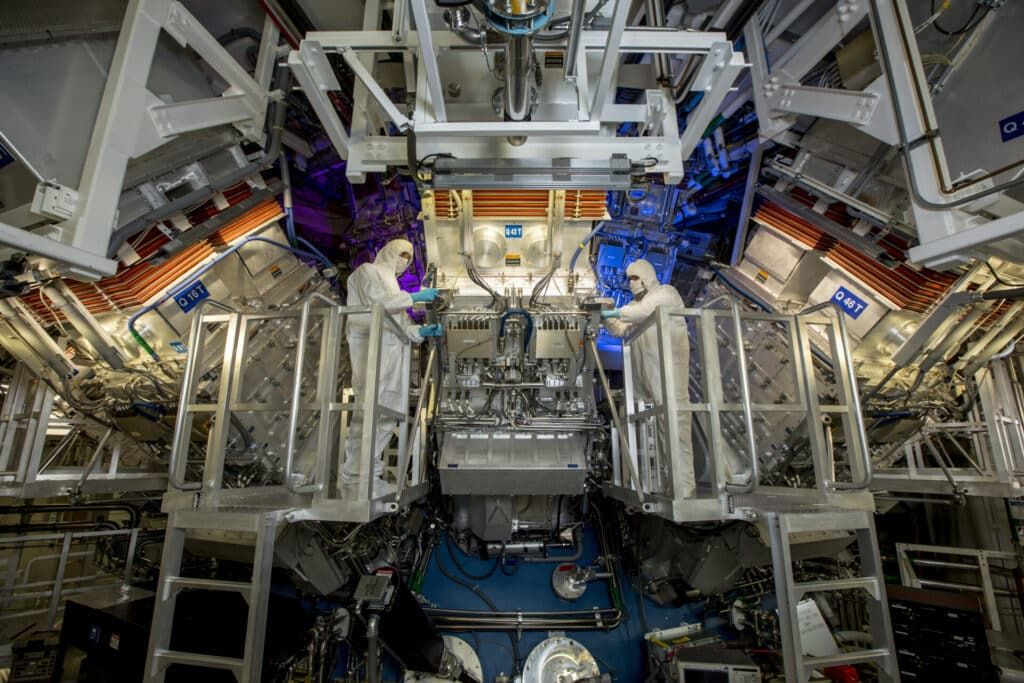 National Ignition Facility operators inspect a final optics assembly during a routine maintenance period in August. Photo credit: Lawrence Livermore National Laboratory
National Ignition Facility operators inspect a final optics assembly during a routine maintenance period in August. Photo credit: Lawrence Livermore National Laboratory
This week’s headlines have been full of reports about a “major breakthrough” in nuclear fusion technology that, many of those reports misleadingly suggested, augurs a future of abundant clean energy produced by fusion nuclear power plants. To be sure, many of those reports lightly hedged their enthusiasm by noting that (as The Guardian put it) “major hurdles” to a fusion-powered world remain.
Indeed, they do.
The fusion achievement that the US Energy Department announced this week is scientifically significant, but the significance does not relate primarily to electricity generation. Researchers at Lawrence Livermore National Laboratory’s National Ignition Facility, or NIF, focused the facility’s 192 lasers on a target containing a small capsule of deuterium–tritium fuel, compressing it and inducing what is known as ignition. In a written press release, the Energy Department described the achievement this way: “On December 5, a team at LLNL’s National Ignition Facility (NIF) conducted the first controlled fusion experiment in history to reach this [fusion ignition] milestone, also known as scientific energy breakeven, meaning it produced more energy from fusion than the laser energy used to drive it. This historic, first-of-its kind achievement will provide unprecedented capability to support [the National Nuclear Security Administration’s] Stockpile Stewardship Program and will provide invaluable insights into the prospects of clean fusion energy, which would be a game-changer for efforts to achieve President Biden’s goal of a net-zero carbon economy.”
Because of how the Energy Department presented the breakthrough in a news conference headlined by Energy Secretary Jennifer Granholm, news coverage has largely glossed over its implications for monitoring the country’s nuclear weapons stockpile. Instead, even many serious news outlets focused on the possibility of carbon-free, fusion-powered electricity generation—even though the NIF achievement has, at best, a distant and tangential connection to power production.
To get a balanced view of what the NIF breakthrough does and does not mean, I spoke this week with Bob Rosner, a physicist at the University of Chicago and a former director of the Argonne National Laboratory who has been a longtime member of the Bulletin’s Science and Security Board. The interview has been lightly edited and condensed for readability.
Bob Rosner: I should tell you that I have had some very interesting interactions. I was for example on public TV in Chicago. And basically, the bottom line is that the DoE [Department of Energy] publicity machine really wanted to steer away from the weapons part of the story and focus on, you know, the energy future. And if you probe just a micron beneath the skin of that story, you discovered that it’s not quite what’s going on … But I was faced by a TV reporter who thought this is an energy story, and I had to basically tell him, “No, it isn’t.” It’s an extremely interesting story, for people interested in weapons and nonproliferation, and for science in general. That’s what it’s about. It happens that you do have some tangential relationship to energy, but the people working on energy (and who pay for the ongoing research) had nothing to do with this project. The folks who succeeded so splendidly in attaining ignition and self-sustained fusion on December 5 were not part of DoE’s fusion energy program (which sits in the DoE Office of Science Office of Fusion Energy Sciences); they’re working instead for the National Nuclear Security Administration (NNSA), which manages our nation’s nuclear weapons stockpile.
John Mecklin: So why don’t you explain, really quickly, for people who aren’t up on this: What is it that the NIF did? What is the big breakthrough they’re announcing?
Rosner: So we have known how to fuse hydrogen and release energy for a long time—in 1952, we exploded the first thermonuclear device, whose detonation was largely the result of hydrogen fusion. So we’ve known how to do that for a very, very long time. What’s different here is that it’s never been done under controlled circumstances in a laboratory. And the “it” is a sustained burn. Making hydrogen fuse to produce a few nuclei of helium, i.e., a few alpha particles, that’s been done numerous times in the lab. In fact, in the magnetic confinement fusion world, JET [the Joint European Torus) was able to produce in its tokamak plasma helium via hydrogen fusion, no problem. But this was never a self-sustained reaction, what the physicists would call ignition and burn. Ignition means I light it [the fusion reaction], and it continues to burn based on its own energetics that doesn’t require any additional energy input once you’ve lit the “match.”
That’s what’s going on here. So ignition and burn is what it’s all about, you start the fusion reaction, and then all the energy that is produced within the reaction sustains the reaction, keeps it going.
And this is the first time it’s been done in the lab, in a fully controlled manner. It’s a huge achievement!
Mecklin: And doing this is important, I’ve heard you say, in terms of the nuclear stockpile stewardship, that it will help there. Why don’t you explain why.
Rosner: So I have to turn the clock back a bit, okay? This will be an old story for you, but let’s just tell the whole story. In the late ‘80s and early ‘90s, the decision was finally made to stop underground testing. And in fact, in the early ‘90s, the United States stopped it entirely. We no longer brought [nuclear] devices to Nevada, buried them underground, and pushed the button. And there was a huge resistance to stopping, because that program of testing in Nevada wasn’t just for fun. It was, basically, to certify the nuclear stockpile. They would withdraw these weapons at random from the stockpile, bring them to Nevada, and demonstrate two things: One is if you push the button, it went off, and two, that the yield was as expected. In other words, the whole thing worked, as it was designed.
And for the [Defense Department], the STRATCOM people, that was absolutely essential. That’s what they needed to know. You push the button, it works, and the yield is the right yield. Because if the yield is off, they might have to, for example, increase the number of weapons they send on a given target that they want to destroy.
So now you’ve stopped the testing, and the obvious question is: How do these people know that the whole thing still works? So that was the start of this tongue twister called the Science Based Stockpile Stewardship Program. And the promise was that we would put together a set of new codes, using advanced computers as well as new kinds of experiments—what they call nonnuclear experiments and what they call subcritical experiments that didn’t get a detonation—that would then serve to certify the stockpile. What we’re talking about is there was an ongoing surveillance program of the stockpile. They would open these things up at random, look inside, and occasionally they’d find that there was some aging going on, like, for example, a part doesn’t work as it’s supposed to work anymore. And you’d have to replace it.
Often, the replacements were made in a different way than the original; for example, different kinds of material were used. So what you had, the question that you had to answer is: Under the explosion conditions, how do you know that this new thing that you put in actually works as it’s supposed to?
I’m sure you you’ve heard the story that people in Congress—there are people who started to press for going back to nuclear testing. So the Stockpile Stewardship Program does need to demonstrate that the “science-based” approach does work. And as I said before, NNSA decided to build new experimental facilities (one of which was the National Ignition Facility), efforts were made to construct new simulation codes to help certify the weapons, and investments were made in new generations of advanced computers that these codes required and could run on. And NIF was meant to, in part, validate the design code approaches used for the weapons. Before NIF was even completed, they chose a target experiment that—in combination with simulation codes advances—could demonstrate that we knew what we were doing.
One of the key target experiments that they picked was: We’re going to show that we can ignite and sustain a fusion reaction in the laboratory. That’s why NIF was called the National Ignition Facility. This goes back to the late ‘90s, with NIF’s groundbreaking in 1997. Early on, the weapons folks were optimistic that this would be kind of a no-brainer; just build a laser facility big enough, and it will just work. Unfortunately, that turns out to be wrong.
To give an intuitive sense of why that turns out to be so hard: Imagine you started with something that’s the size of a basketball but solid. And what do you have to do is squeeze it down, decrease its volume by a factor of 1,000, to the size of a baseball. And all the time that it is compressing by a [volume] factor of 1,000, it has to stay perfectly, perfectly spherical. If you have the slightest deviation from sphericity, what happens is the stuff deforms very quickly, and that’s practically the end of the implosion. So the huge success here was to figure out both on the part of how to operate the laser, then how to deal with the capsule, so that the capsule stays almost perfectly spherical during the implosion. And they finally figured it out. That’s what it’s all about.
Now, to get to this point required a close interaction between the experimentalists and the theorists and simulation code folks—an iterative process, involving an incredibly complex set of physics, some of it directly relevant nuclear weapons physics. And their success meant that they mastered the physics well enough in the simulations—that they knew what they were doing—to have the experiment succeed. And that gives considerable confidence that they have also mastered the physics of nuclear devices and can make sure these nuclear weapons will work.
Now, it turns out that’s only one of the uses of NIF. You might ask, “Why did they pick ignition?” First, because the science is so cool, and you can demonstrate that you know what you’re doing. Second, because when you get to ignition, you get a huge blast of radiation, just enormous, as well as extremes in temperature and pressure. And that you can use to test for example, the properties of various materials critical to weapons. You can answer questions like, “Suppose I had different kinds of material in the bomb? How would they respond to this blast of radiation? To these temperatures and pressures?” Thus, as far as temperature, radiation environment, and pressures are concerned, you could do that experiment right there at NIF. So this second use relates to the fact that you can replicate the physical conditions during a nuclear blast.
And there’s a third reason, by the way. We’re going to have nuclear weapons for a long time, no matter how much we want to get rid of them. They’re going to be hanging around until we have a different regime of trust between countries. What that tells you is that going into the distant future—in the next 50, 60, whatever, 100 years—if you want to you have these weapons, you have to deal with them. That means you need a cadre, I think almost like high priests, high priests of weapons, that you actually trust that they know what the hell they’re doing. The generation of folks that built the original bombs, they’re basically retired or gone altogether. Now we have a whole slew of new folks, youngsters. They’re supposed to know how to do this. Some of them were in place already during the ‘70s and ‘80s, when we were still designing and building weapons. But even those people are getting long in the tooth; they’re going to be gone from the labs in the next 20 years or so. And so now you’re looking at, you know, kids from my perspective, in their 30s. And you want to train them how to do this.
But now you can’t build entirely new weapons anymore. So what do you do? What you do is you see whether or not you can train them to work on physics problems that are just about as hard as building a weapon, designing a weapon, but still related to the physics of weapons. In fact, it turns out that the physics problem that they set themselves to solve—getting ignition and sustained fusion at NIF—is actually harder than designing and building a functional nuclear weapon. You may be surprised to learn that doing things on NIF turns out to be harder; it is harder. The reason why? In ‘52, the weapons folks were able to get away with blowing up an H-bomb up using very low-tech technology – basically, they didn’t have supercomputers then—they had slide rules, mechanical computers, electronic computers that were far less capable than what you now have on your desktop. Whereas nowadays, you need a, you know, a petascale machine to figure out what’s going on within NIF. So this is actually a harder problem. And thus, this facility can be used to train the next generation of weapons designers; you can regard it as a teaching facility for the next generation.
And so those are three distinct motivations underpinning the December 5 fusion experiment.
Mecklin: The news coverage and how it was put out, though—it was all about, you know, electricity generation from fusion.
Rosner: It’s basically—it’s BS, right? That’s how we started our chat… By the way, during the [Energy Department] news conference, yeah, the whole affair was split into two bits. There was a news conference where you had (Energy Secretary Jennifer) Granholm and the leadership gang talking, and then afterwards you had a panel of Livermore scientists who actually worked on this experiment. And that panel was straight on. If you listen to the panel, you would know immediately that this was not about electricity generation.
One person who really was clear about all this during the preceding news conference was (National Nuclear Security Administration Deputy Administrator for Defense Programs) Marv Adams. I don’t know whether you saw the whole thing. But Marv didn’t talk about energy. Marv talked about the science, and why we’re doing this. And he said something else, which I should have added just a moment ago, which is: If you succeed in doing this—attaining ignition and sustained burn—you’re sending a signal to adversaries that you have the capacity to actually do the things you say you can do. And that’s a big deal—it definitely is a fourth motivation for striving towards ignition and gain.
Mecklin: But why is this particular facility, or something based on this approach, unlikely to be used for electrical generation anytime soon?
Rosner: Here’s my standard story, which actually comes straight from Marv Adams, because he said what I’m about to tell you: This facility can do one shot a day; this is at slightly more than two megajoules (of output). For an energy source, it would have to do the same thing at least 10 times a second. If you ask, “Do the lasers exist that can do this?” Not in your dream. The pellet cost a bit over $100,000 to manufacture. The word bespoke applies to clothing; my bespoke suit, right? This is a bespoke pellet. And it probably took about a week or more to manufacture. You’d need well over a million pellets like that, [manufactured] to the same standard, a day for a power plant. So you might guess (correctly) that the technological challenges are formidable, and I haven’t even described how you’re going to get electricity out of this kind of facility. We haven’t even talked about that, or about the costs.
Mecklin: I have a hard time imagining how we are going to transfer that heat into some sort of electricity generation.
Rosner: Well, there is no good answer to that yet. I was asked, “Well, how long will it take?” My answer was twofold. It’s going to take many decades. The second was—ultimately, “Is it going to be practical?” The answer to that will have to involve the obvious question of “How much is it going to cost to do this?” And no one has a clue about how much this is going to cost. And whether it can be competitive with, as an example, solar cells, or even solar cells coupled with grid-scale batteries; we have no idea. So I can’t answer that question.
Mecklin: I’ve always thought it’s somewhat ironic. We have a thermonuclear furnace in the sky. But we’re always trying to re-create it on Earth.
Rosner: Yeah. But the furnace in the sky has one big, big, big advantage. It has a way of containing everything and compressing it, and that’s called gravity. And that’s not just useful but also cheap.
Together, we make the world safer.
The Bulletin elevates expert voices above the noise. But as an independent nonprofit organization, our operations depend on the support of readers like you. Help us continue to deliver quality journalism that holds leaders accountable. Your support of our work at any level is important. In return, we promise our coverage will be understandable, influential, vigilant, solution-oriented, and fair-minded. Together we can make a difference.


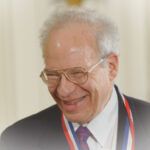



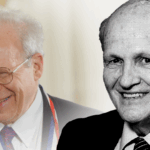
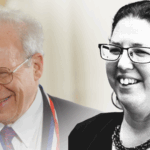
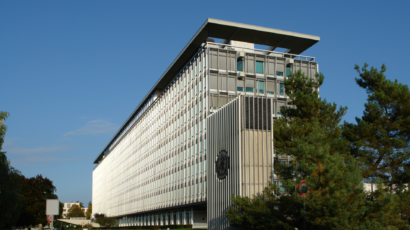
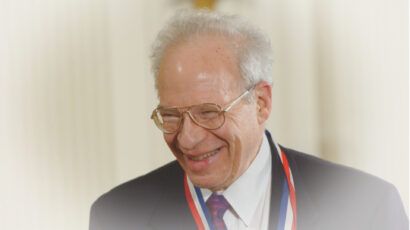
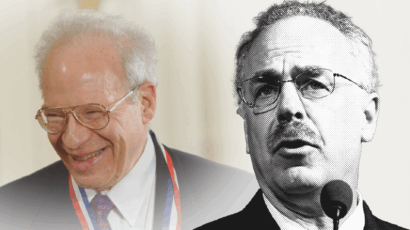
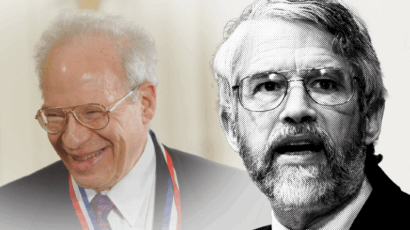
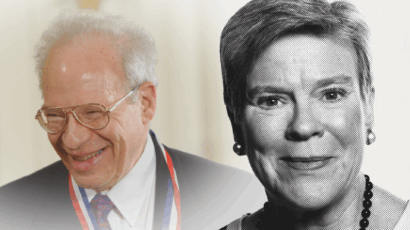
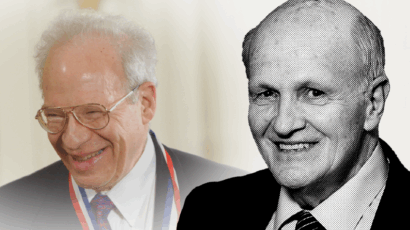
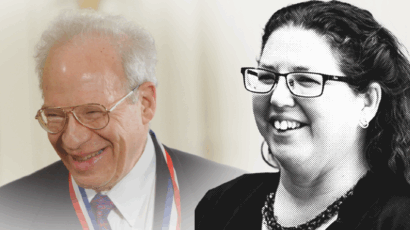
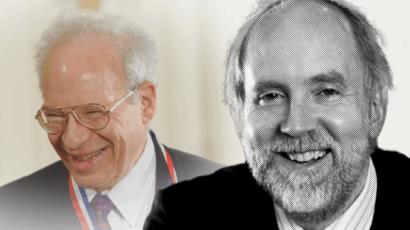
Ignition means I light it [the fusion reaction], and it continues to burn based on its own energetics that doesn’t require any additional energy input once you’ve lit the “match.”
Hi John and Bob, from a scientific perspective, this is the most informative and clear article I have read on this matter. Thank you! And thank you for your help to clear up the mud. I only have one question and concern. If I read the conversation correctly, you said that this milestone at NIF accomplished ignition. You said that ignition means the reaction “continues to burn based on its own energetics [and] doesn’t require any additional energy input once you’ve lit the match.” The reaction lasted for 90 picoseconds. Can you help me understand this reaction duration in the… Read more »
To add to the conversation, consider the comparison with fission. The process was discovered in 1938. By 1942 Fermi demonstrated a continuous chain reaction. A couple of years later the Manhattan project built large production reactors. Power reactors followed after WWII, but it still took about another three decades to get to commercially significant electric generating plants. Fusion was understood before fission. Now, nearly a century later, the fusion community has yet to accomplish the fusion equivalent of Fermi’s demonstration. If that ever comes, we can expect that the time to significant commercialization would be comparably long. Nature does not… Read more »
The only technology I am aware of in the modern era (from say, 1750) that took longer than 30-40 years from concept to introduction into the marketplace that was commercially successful was the liquid fueled rocket, demonstrated in 1926 and first commercial success (depending on how defined) was the first successful Ariane 1 in 1983 or the Spacex Falcon 1 in 2008. While liquid fueled rockets did launch commercial payloads since the 1960s, these rockets were vehicles that were developed for military or scientific purposes by governments and repurposed for commercial use. If a technology spends more than 30-40 years… Read more »
Could you comment on statements by Niel Degrasse Tyson to the opposite effect?
We have commented on Dr. Tyson’s comments in this video.
https://www.youtube.com/watch?v=DZb-P5C_08g
This article is very informative. And I don’t think I would have learned this anywhere else but by reading the “Bulletin”. It’s starting to make sense now. You realize some lay people like myself think that the ignition facility is so we can all enjoy clean limitless energy. Even Biden came out and commented on it. I was at the edge of my seat reading this story. But I think you are spot on once I start to think about it. Thank you for setting me straight on this. It would be interesting to know exactly how much energy they… Read more »
To produce the 2.1 MJ input laser pulse required 332 MJ of electricity, and yielded 3.25 MJ of fusion energy. So the fusion yield was about 1% of the electric energy input. In a tokamak, the ratio electric energy in to fusion energy out is much better
Why is this fella so much more credible than everyone else? He’s definitely saying all the things that get the angry internet people excited to all agree to bash on something. So, what makes him so credible as to say with such confidence that, in 30 years, nothing at all has changed about the potential of this facility? He cannot know for sure that they will not use the tech that they understand somewhere else, and continue doing NIF type projects at NIF, and do energy projects somewhere else with similar tech. It seems so short sighted for everyone to… Read more »
Hugh numbers of people view it as being “pretty dang cool.” Typically they have little interest it looking for critical analysis of the technology. Most prefer to believe that this technology will be the savior that will turn this Titanic around and that we have 20-30 years to do that. Is This the ‘Kitty Hawk Moment’ for Fusion Energy? https://www.theatlantic.com/technology/archive/2022/12/department-of-energy-nuclear-fusion-breakthrough-nif-livermore/672439 Sun in a Bottle: The Strange History of Fusion and the Science of Wishful Thinking By Charles Seeife Published on 30 October 2008 https://www.amazon.com/dp/B002BWQ5H2/?tag=slatmaga-20 ITER is a showcase … for the drawbacks of fusion energy https://thebulletin.org/2018/02/iter-is-a-showcase-for-the-drawbacks-of-fusion-energy ITER Newsline KEY COMPONENTS… Read more »
How much, if any of the physics demonstrated in the simulation models at LLL is transferable to the Joint European Torus in designing a system capable of producing sustained fusion using a tokamak reactor?
Although not discussed in here, please expand on NASA’s work with Lattice Confinement Fusion and its practicality. That seems to be the Holly Grail.
More on nuclear energy and preceding non-nuclear history context in “Global Warming, the Environmental Movement and Socialism” at
https://mltoday.com/global-warming-the-environmental-movement-and-socialism/
A better critic critic could have been chosen than Bob Rosner who seemed to have a love of the extreme physics associated with nuclear weapons. Rosner stated “So ignition and burn is what it’s all about, you start the fusion reaction, and then all the energy that is produced within the reaction sustains the reaction, keeps it going.” I believe he fell for the lab’s ‘ignition’ deception. When working in the secret environment of nuclear weaponry obscuring details is part of the job and outside review is often not a comprhensive review. During the December 5, 2022, NIF experiment the… Read more »
We had practically the same “success message” from LLNL already 8 years ago
https://www.nature.com/articles/nature13008
https://www.theguardian.com/science/2014/feb/12/nuclear-fusion-breakthrough-green-energy-source
And comparing laser power with heat can be questioned..how about wall plug efficiency?
Excellent point. The lab created four breakeven definitions. Each one has helped feed the news/funding cycle. This graphic evaluates each in the context of the Aug. 2021 result.
http://newenergytimes.com/v2/sr/LLNL/NIF-breakeven2.png
Excellent analysis. I listened to both parts of the briefing, and this gives a clearer view of the Stockpile Stewardship situation than the Livermore speakers did in the science panel after the general press conference. Thanks.